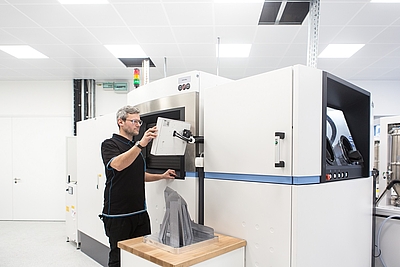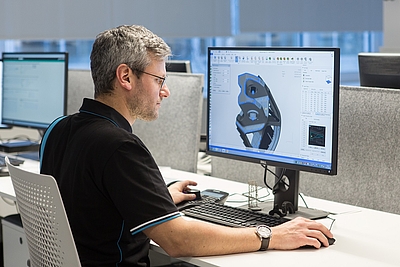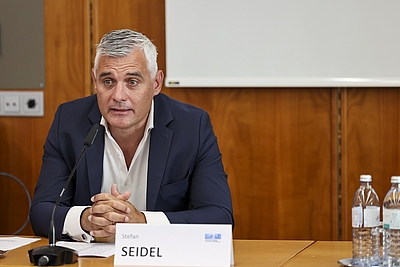“Lightweight construction correlates with climate goals”

11.08.2023
Material and energy are scarce, climate action is the order of the day. And lightweight construction is the answer. Automotive cluster manager Florian Danmayr talked to Stefan Seidel, CTO of Pankl Racing Systems and spokesperson of the A2LT lightweight construction platform, about what lightweight construction actually is and how it can function as a key technology for mitigating climate change.
How do you define lightweight construction?
In Austria, lightweight construction is typically only associated with lightweight materials, i.e., carbon fibre or aluminium. But lightweight construction is far more than that. It’s an interdisciplinary approach encompassing a wide variety of technologies that starts in the design phase. For example, by using bionic structures, where you choose the right materials and the right manufacturing technology to make lightweight construction affordable and as efficient as possible for a wide variety of industries.
Is lightweight construction driven purely by the mobility industry?
Of course, lightweight construction primarily comes from the mobility industry, from aircraft construction, and from aerospace, where lightweight construction is an absolutely essential component because every kilogram that you save offers massive benefits. In the meantime, lightweight construction has found its way into other areas of mobility, such as the automotive and heavy goods vehicle sectors. However, we are now also increasingly seeing lightweight construction shifting into focus in other industries because it reduces the need for resources.
What are your customers’ objectives when they use lightweight construction technology?
In the mobility industry, lightweight construction means that you need less fuel, less energy, to move your vehicles. Every kilogram you save helps you conserve resources when vehicles move and accelerate. This means that you generate less CO2 not only during production but also when you operate the vehicles. There is a clear correlation between the use of lightweight construction and achieving our climate targets.
How does A2LT support this?
A2LT forms the basis for cooperations and for an exchange of knowledge. Last year, we were primarily focused on the exchange between companies, but we are increasingly looking to be the single point of entry for the government, too. We are concluding more international cooperations and networking internationally; after all, lightweight construction does not stop at the Austrian borders. A2LT is the interface and first port of call for all member companies and the entire domain.
Are there limits to what is technically feasible?
Pankl has one of the largest centres of excellence for 3D metal printing where we produce components from powder. This allows us to produce incredibly exciting designs, but there is still a disadvantage: costs. Of course, you can try to optimise costs. But really, the most important question is: which production technologies best match which of our customers’ requirements and how? And that’s where A2LT’s three keywords hit the nail on the head. Lightweight construction needs to be sustainable, smart and affordable.
To what extent?
Vehicle operations, the entire product emergence process, and recycling must be sustainable. We look to inject intelligence to boost efficiency. And it needs to be affordable. The greatest ideas are useless if you don’t meet the market’s cost expectations and fail to transition lightweight construction into series production. This takes us full circle to metallic 3D printing. We have amazing use cases in prototype building, in the high-performance sector, in racing. But shifting into series production is still a little tricky because the costs are not yet where they should be.
Talking Heads
Podcast with Stefan Seidel, CTO Pankl Racing Systems and spokesperson of the A2LT lightweight construction platform, and economist Anna Kleissner.
>> Listen to podcast (in German only)
| Stefan Seidel (46) is Chief Technical Officer and has been a board member of Pankl Racing Systems AG since 2015. As CTO he is responsible for sales as well as research and development in the racing and high performance areas. After studying Mechanical Engineering and Business Economics at the Technical University of Graz, Stefan Seidel started his career at Pankl Drivetrain Systems. This was followed by a move to the aluminium industry before he returned to Pankl in 2007. |
| Pankl Racing Systems AG develops, manufactures, maintains and distributes high-tech mechanical systems for dynamic components in the global niche markets of the racing, luxury automotive and aviation industries. The company was founded in 1985 and is headquartered in Kapfenberg, Styria. It operates the Racing, High Performance and Aerospace divisions. Pankl works with the following technologies: machining, heat treatment, forming and additive manufacturing. www.pankl.com/racing |

